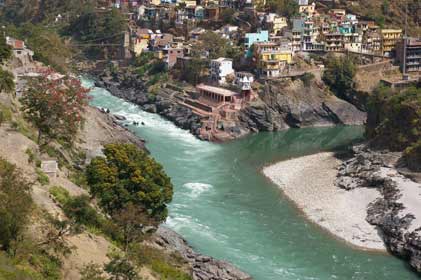Reduction of ‘good bacteria’ in Alaknanda, Bhagirathi rivers worry scientists

The Alaknanda and Bhagirathi, the tributaries of the Ganges, are not in good health. Micro invertebrates, the friendly bacteria that make water healthy, are rapidly becoming extinct due to pollution. This has been revealed by the research of scientists of Wildlife Institute of India.
In Bhagirathi river from Gomukh to Devprayag, either the friendly bacteria are completely absent or their number is very less. The same situation has been found in the Alaknanda river from Mana to Devprayag. According to scientists, the low availability of micro-invertebrates in both the rivers is an indication that the water quality here is not good at present. The team of scientists is preparing a detailed report.
Reasons for deteriorating health of rivers
Along with the all-weather road, the debris of large-scale development works on the banks of rivers are being dumped directly into the rivers. The dirty water coming out of the houses of the cities situated on the banks of the rivers is being discharged into the rivers without treatment. Batriaphos bacteria is believed to be one of the keys to maintaining the purity of Ganga water ‘Gangajal’. According to the scientists, the purity of the Ganges water also remains intact due to the presence of high sulfur content in it and the Ganges water does not get spoiled for a long time.
The Ganges cleans itself of the pollutants in the flow of just one kilometer
It has also come to the fore from scientific research that while other rivers of the country are able to clean themselves after a flow of fifteen to twenty kilometers and the pollutants found in the rivers get deposited at the banks of rivers. But, the Ganges cleans itself in a flow of just one kilometer.
Worrying aspect
The number of friendly bacteria, somewhere less than 15 percent, in both the rivers, friendly bacteria were studied on the parameters of Ephemeroptera, Plecoptera, Trichoptera (EPT). If the EPT index in the water of a river is 20%, it proves that the water quality is fine. If the EPT index is more than 30%, it means that the water quality is very good. However, the index of EPT has been found to be less than 15 per cent in many places in both the rivers, which is a worrying aspect.
Under the supervision of senior scientist Dr. VP Uniyal, Dr. Nikhil Singh and others examined the friendly bacteria (micro invertebrates) at different places in both the rivers. Scientists under the National Mission for Clean Ganga (NMCG) conducted the study from Mana (Badrinath) to Devprayag in the Alaknanda river and from Gomukh to Devprayag in the Bhagirathi river. According to the scientists, Ganga water has the ability to absorb oxygen from the atmosphere much more than the water of other rivers. Compared to other rivers, the capacity of digesting pollutants in the Ganges is found to be 20 times more. The tributaries of the Ganges are Bhagirathi, Alaknanda, Mahakali, Karnali, Kosi, Gandak, Saryu, Yamuna, Son river and Mahananda rivers.








